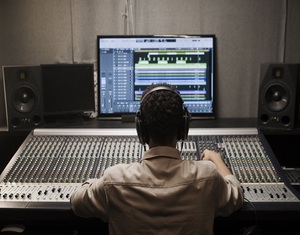-
 Find in Members
Find in Members Find in Videos
Find in Videos Find in Channels
Find in Channels
This website uses cookies to ensure you get the best experience on our website.
To learn more about our privacy policy Click herePrivacy Preference
-
- Last updated February 6, 2023 0 comments, 263 views, 0 likes
- USA - Get Directions
More from Jared White
More in Politics
Related Blogs
Maximizing Your Mixes with the Best Studio Monitors
Posted By Jared White
February 6, 2023
Body
As a music producer or audio engineer, it's crucial to have a reliable set of studio monitors to ensure that your mixes sound professional and accurately represent the final product. But with so many options on the market, it can be tough to determine which monitors are right for you. In this blog post, we'll explore the key features you should look for when purchasing studio monitors and share our top recommendations for the best options available.
Frequency response
The frequency response of a studio monitor refers to the range of frequencies it can accurately reproduce. Ideally, you want a monitor with a flat frequency response, which means it accurately reproduces all frequencies without exaggerating or diminishing any specific range. This will help you mix with a neutral reference, so you can make accurate adjustments to your tracks.
SPL (Sound Pressure Level)
SPL is a measure of the volume a monitor can produce, and it's important to choose a monitor with an SPL that is appropriate for your studio's size and usage. Monitors with a high SPL are ideal for larger studios or those that require higher volumes, while monitors with a lower SPL are more suited to smaller spaces or home studios.
Active vs. passive monitors
Active monitors have built-in amplifiers, while passive monitors require an external amplifier to power them. Active monitors are more convenient, as they don't require additional gear, but they can also be more expensive. Passive monitors can offer more flexibility in terms of amplification options, but they require more setup time and equipment.
Size and design
The size and design of your studio monitors can have a significant impact on their performance. Smaller monitors may be more suitable for smaller studios, but they may not provide the same level of accuracy as larger models. On the other hand, larger monitors can be more suitable for larger studios, but they may take up more space. Consider the size of your studio and your personal preferences when choosing the right monitors for you.
Mackie CR Series CR8-XBT
JBL Professional 305P MkII
PreSonus Eris E4.5
KRK RP7 Rokit G4
Yamaha HS5
In conclusion, choosing the right studio monitors can make a big difference in the quality of your mixes. When shopping for monitors, look for those with a flat frequency response, appropriate SPL, and a size and design that suits your needs. We hope this guide helps you find the best studio monitors for your studio.
Photos
Map
-
Locations on MyWorldGo
Location Information
- Location: USA - Get Directions
- Formatted Address: United States
- Country: United States












Comments